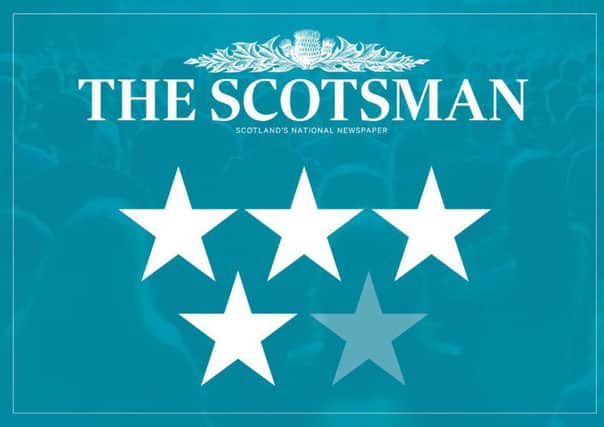EIF Music review: Had We Never, Scottish National Portrait Gallery


The white marble statue of Robert Burns which stands in the Great Hall of the Portrait Gallery has of late been complemented by Douglas Gordon’s deconstructed response, Black Burns, around which the seating was arranged for this short, intimate programme, exploring the poet’s work in the context of his almost-association with the slave trade.
Immaculate a cappella renditions of two of Burns’ most celebrated works – Brian Bannantyne-Scott’s rich bass rendering of Ae Fond Kiss and David James’ spectral yearning Slave’s Lament – reverberated around the atrium. But the star attraction was the first live performance of a very different interpretation of The Slave’s Lament, composed by Sally Beamish using a patchwork of existing melodies, played with soul by the Scottish Ensemble and sweetly sung by reggae artist Ghetto Priest, himself the star of Graham Fagen’s video installation elsewhere in the gallery.
Advertisement
Hide AdAdvertisement
Hide AdMakar Jackie Kay recited her poetic response to Gordon’s work, counting the ways Burns might have ended up in Jamaica as a cog in the slave trade if he had fulfilled his original intentions to take up work as a plantation book keeper. Later, she drew parallels with hard-won 21st-century liberties in Had We Never (Remix).
The programme was completed by Samuil Marshak’s Russian translations of Burns in musical settings by Shostakovich – the foreboding O Wert Thou in the Cault Blast contrasting with the aggressive jauntiness of McPherson’s Farewell – and Arvo Part’s minimalist lamentation of My Heart’s in the Highlands, which was first written in 2000 for James, countertenor of the Hilliard Ensemble, to sing, before Bannatyne-Scott led on a hearty, expressive finale of Burns’ great equality anthem A Man’s A Man.